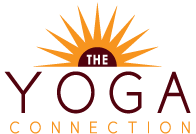Practicing outdoor yoga can intensify your yoga experience. The fresh air can help with deeper…
How to Use Yoga Blocks to Improve Your Practice
Whether you’re planning to start yoga and are shopping for supplies or you’re looking at ways to develop and improve your asana, don’t overlook yoga blocks. These simple props offer a variety of benefits for both new and advanced practitioners. If you’re not convinced, we’re sharing everything you need to know!
What Are Yoga Blocks?
If you’re just starting out (or haven’t started yet), yoga blocks have been a commonly used tool for decades and are simply blocks used to help you improve how you practice, from helping you build your upper body strength to improving your alignment and balance. Most importantly, it helps you reduce the risk of injury, allowing you to pose in a safer way that will provide the most benefits.
Yoga blocks are available in wood, cork, and foam, with foam being the lightest, least expensive, and most commonly used variety, especially for beginners. They’re usually in sets of two and measure 9″ x 6″ x 3″ in size.
4 Ways Yoga Blocks Improve Your Practice
There’s a belief that yoga blocks are like training wheels, they may be okay for beginners but not for experienced practitioners. However, that’s not the case. Yoga blocks are excellent for beginners of course, but they can provide just as much benefit to people who have been practicing yoga for years.
Lengthening
Yoga blocks allow you to lengthen your body, deepening your stretch without having to struggle to stay in the pose. For example, Uttanasana, or the standing forward bend in which you fold your torso over your legs and place your hands next to your feet or on the ground, lengthening your spine. But, what if you can’t reach the ground? Instead of trying to overextend and strain, a yoga block allows you to “reach” the ground in a pose that gives you the benefits of stretching your hamstrings and calves while calming the mind and easing stress.
Yoga blocks are an excellent way for people to progress in their flexibility in a safe and gentle manner.
Balancing
We’ve talked about how yoga can help your balance, and over time, you need to update poses to continue improving the skill. Yoga blocks can be used to change your base slightly to continue pushing you forward. For example, placing a block under your foot when you are in Anjaneyasana, a low lunge, can challenge your core as you maintain stability.
Supporting
Several positions are used as resting or restorative poses, such as Balasana, or Child’s Pose, or Adho Mukha Svanasana, Downward Facing Dog Pose. But if you lack strength in your wrists or flexibility in your back, you may find these poses anything but restorative. Using a block can support your wrists in a downward-facing dog or your head in a child’s pose, allowing you to get the full benefit of the pose.
Strengthening
Yoga blocks can help you align your body, keeping you in the correct pose which helps you build muscle without risking injury. For more advanced practitioners, they can provide additional resistance and challenge, improving how a pose strengthens your muscles. For example, holding a block between your thighs while flowing through a Sun Salutation can activate the adductor muscles that run through the inner thighs, and this can help deepen your core and gluteus medius muscles.
Join Us for a Class at Our Smithfield Yoga Studio
To learn how to do poses properly, use yoga blocks, or get the most from your practice, join a yoga class at our Smithfield studio today. Check out our class schedule or call us at 919-971-1431 to learn more about which options may be right for you!
Contact Form
We would love to hear from you! Please fill out this form and we will get back to you shortly.
You May Also Like...
- How to Practice Yoga Outside
- Online Yoga Classes Vs Studio Classes
Want to explore yoga, but aren't sure if yoga videos on YouTube or signing up…
- Improving Stability and Balance with Yoga
Minimize your risk of falling and improve cognitive awareness with balancing yoga postures that increase…
